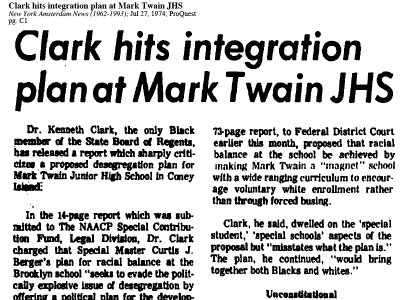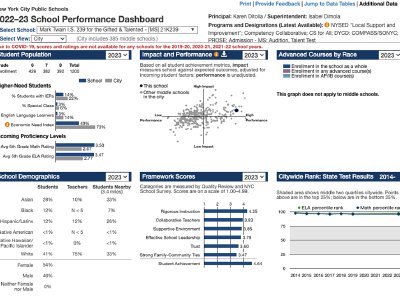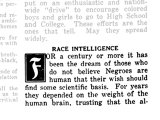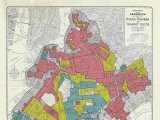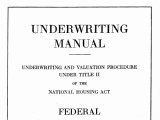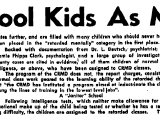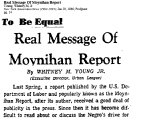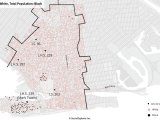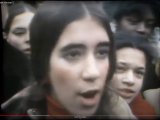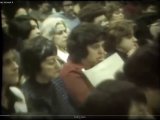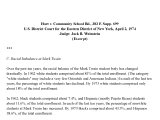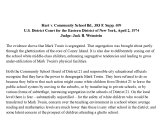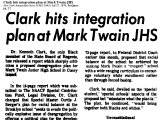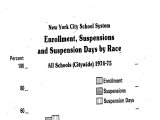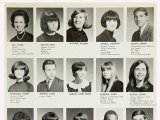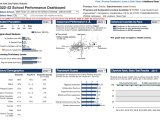How Did NYC Segregate its Schools?
New York City is one of the most racially segregated school districts in the nation.1 Many official policies, as well as individual and group actions, created segregation in New York’s schools – and continue to sustain it today.2
The documents in this collection illustrate six key ways that New York City segregated its schools over the last century:
- Housing Policies and Patterns
- School Zones
- Racist and Ableist Ideas
- School Practices Including Tests, Labels, and Discipline
- School Governance
- Admissions Policies
Read More
The schools in and around Coney Island, Brooklyn, offer examples of each of these tools of segregation in action. Mark Twain Junior High School opened in Coney Island in 1937. It served an almost exclusively white student population until the 1960s. However, between 1962 and 1972, the percentage of white students at Mark Twain declined from 81 percent to 18 percent. In 1972, Doris Hart, on behalf of her son Jeffrey Hart, filed a lawsuit accusing the local school board of creating and operating a segregated school. This was the first school desegregation case to reach federal court in New York. (Previous cases, like those initiated by Mae Mallory and the Harlem Nine boycotters, were in state court.)
Judge Jack Weinstein agreed that Mark Twain was segregated, and he ordered Twain to be desegregated. The court’s plan to desegregate the school, which emerged from a process that involved much public debate, transformed Mark Twain into a “gifted and talented” school.
Today, segregation in New York City schools takes many forms. In one form of segregation, wealthier students, white students, and students who do not have disability labels or English language learning needs are gathered together at certain schools, which exclude poorer students, most Black and Latinx students, and many of those with disability labels or who need support in learning English. Mark Twain Junior High School today is one example of this pattern - although there are many other schools like it in the city.
Primary sources from Mark Twain, Coney Island, and the nation in this time period show segregation’s many roots. Segregation is not, and has never been, a “natural” condition—not in New York City or elsewhere. It is the result of human actions taken in the past and present. These primary sources help us identify the human decisions that produced, and that in some cases continue to maintain, segregation in New York City schools.
These sources are difficult to read and watch, as they often contain direct and indirect public statements of racism and ableism. Please choose to explore them, or not explore them, based on your own needs.
-
John Kuscera, “New York State’s Extreme School Segregation: Inequality, Inaction and a Damaged Future,” March 26, 2014 (Los Angeles: UCLA Civil Rights Project),https://civilrightsproject.ucla.edu/research/k-12-education/integration-and-diversity/ny-norflet-report-placeholder; Danielle Cohen, “NYC School Segregation Report Card: Still Last, Action Needed Now,” June 10, 2021 (Los Angeles: UCLA Civil Rights Project),https://www.civilrightsproject.ucla.edu/research/k-12-education/integration-and-diversity/nyc-school-segregation-report-card-still-last-action-needed-now. ↩︎
-
Several works help illustrate how segregation has worked in New York City. In roughly chronological order, see: Kabria Baumgartner, In Pursuit of Knowledge: Black Women and Educational Activism in Antebellum America (New York: New York University Press, 2019); Judith Kafka, “The Colored People Have Dispersed: Race, Space, and Schooling in Late 19th Century Brooklyn,” Gotham Blog, Sept. 29, 2020, https://www.gothamcenter.org/blog/the-colored-people-have-dispersed-race-space-and-schooling-in-late-19th-century-brooklyn, accessed May 31, 2024; Kevin McGruder, Race and Real Estate: Conflict and Cooperation in Harlem, 1880-1920 (New York: Columbia University Press, 2015); Kimberly Johnson, “Wadleigh High School:The Price of Segregation,” in Ansley Erickson and Ernest Morrell, eds. Educating Harlem: A Century of Schooling and Resistance in a Black Community (New York: Columbia University Press, 2019)https://ansleyerickson.github.io/book/chapters/03/; Barbara Ransby, Ella Baker and the Black Freedom Movement: A Radical Democratic Vision. (Chapel Hill: University of North Carolina Press, 2003); Christopher Bonastia, The Battle Nearer to Home: The Persistence of School Segregation in New York City (Palo Alto: Stanford University Press, 2022). ↩︎
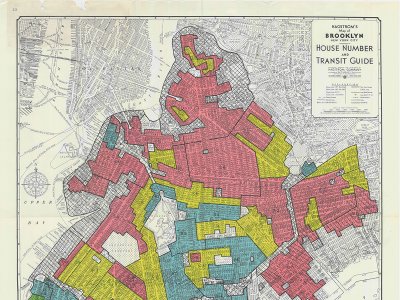
Housing Policies and Patterns
Many schools enroll students based on where they live. Therefore, policies that encourage residential segregation have been a key factor in school segregation.
View primary sources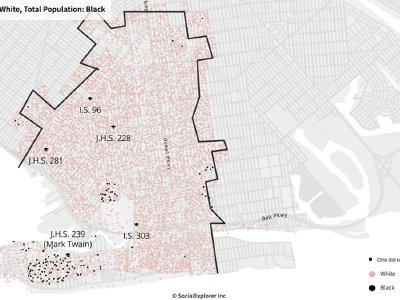
School Zones
School zone lines link where people live to where their children go to school. Zone lines have helped produce segregation in schools.
View primary sources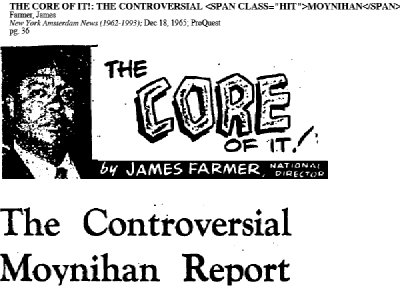
Racist and Ableist Ideas
Claims of superiority or inferiority by race or ability often appear – sometimes quietly, sometimes loudly – in discussions of school segregation and education policy.
View primary sources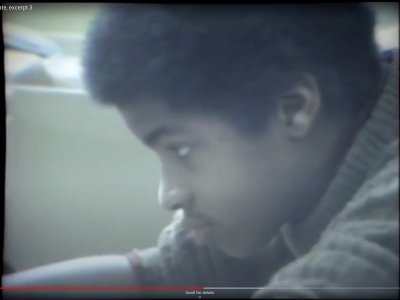
Tests, Labels, and Discipline
Practices within schools can encourage segregation. Decisions about academics, discipline, disability labels, and more divide students within schools – or exclude them altogether.
View primary sources
